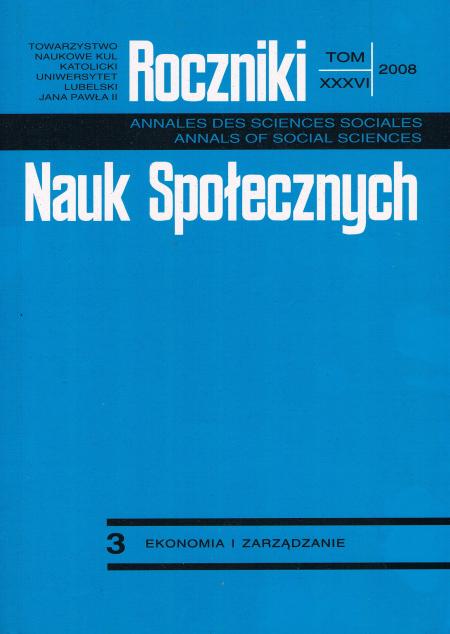Partycypacja pracowników w zarządzaniu - model UE i Polski
Workers' Participation in Management - Its Model in the European Union and the Polish Model
Author(s): Tomasz GruszeckiSubject(s): Economy
Published by: Towarzystwo Naukowe KUL & Katolicki Uniwersytet Lubelski Jana Pawła II
Keywords: state enterprise; worker’s participation in management; co-management; workers council; EU Directive; worker’s participation in polish law; human person; dignity; human rights; moral rights; universal value; unemployment
Summary/Abstract: The article is devoted to the origin of the concept of the workers’ participation in the management, and then to its implementation in the EU and in Poland. The history of implementing common principles of workers’ self-management in the EU is quite complex; the participation model, the socalled Mitbestimung introduced after World War II in Germany (the act was passed in 1976) was then slowly and in a limited range (informing and consulting) introduced on the basis of the EU Directive of 1977 into the legislation of particular member states. Implementation became quicker when the EU decided to establish, as one of variants, the so-called European Company. In this model the European company committee was provided for. The directive was implemented in Polish legislation by the act of 2002; in companies acting in more than one country there is an obligatory company committee. Similarly, there should be a company committee in the so-called European Company and European Economic Interest Grouping. The European Company is an alternative legal form of company, the same on the territory of the whole EU. The history of workers’ participation in management in Poland, broadly discussed in the article, is much more complex. It started in 1981, under the pressure of the “Solidarity” trade union, with introducing the acts on the state company and the workers’ self-management in the state company. These acts, although they are included in the participation current, broadly outlined the rights of the workers’ committee and of the workers’ (delegates’) general meeting, actually granting them part of the rights to make decisions, that in fact belong to the owner (e.g. dividing the profit, sometimes electing the manager). The intention of these solutions was to introduce a reformed model of an independent company in a still planned economy, and they started a broad current of discussion on efficiency of these solutions and limitations of workers’ participation not only in managing, but also in ownership after 1989. The model of the state company of 1981 (actually, in the practice of the 1980’s significantly reduced by the martial law authorities) turned out to be a temporary one and under the conditions of market economy was substituted by a form that made it possible to introduce direct or indirect privatization. However, it is characteristic that Poland has, independent of the EU, its own ample experience and traditions in solving the problem of workers’ participation in management. The author, who in the 1980’s was a workers’ self-management advisor, synthetically compares arguments for and against introducing solutions that include workers’ participation in company management, and decidedly defends the limited participation model in the EU’s version introduced in Poland by the act of 2006.
Journal: Roczniki Nauk Społecznych
- Issue Year: 36/2008
- Issue No: 3
- Page Range: 15-31
- Page Count: 17
- Language: Polish

